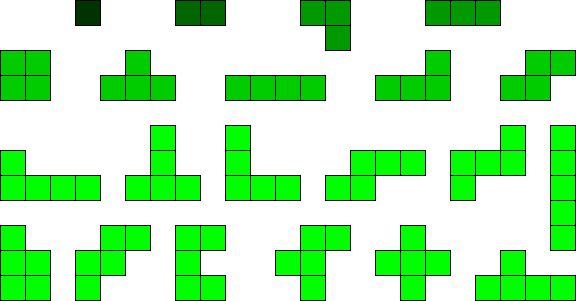Okay, so, the other day I was playing Blokus (wikipedia it) anyway, it involves the following pieces.

Anyway, if you're perceptible, you'll notice that those blocks have all the possible configurations of 5, 4, 3, 2, and 1 cells.
So I was laying my tiles out in order of their respective cell count, which arranges to the following:

So, I was wondering if there was any relation between the number of cells within the shape and the number of configurations. I'm working on the problem right now, but, unfortunately that involves brainstorming and figuring out every single configuration of now 6, 7, 8, 9, and 10 cells.
So, I was wondering if there was a program to do this. I figured out a decent algorithm, you might call it, in figuring it out. But, I was wondering if there's some computerized method of doing this, or, better yet, if there was a pattern that someone already knew about.
I was thinking Fibonacci sequence at first, but I disproved that pretty quickly.
tl;dr: Git.